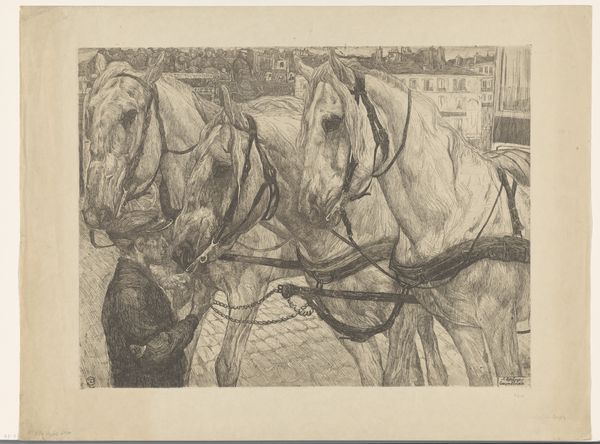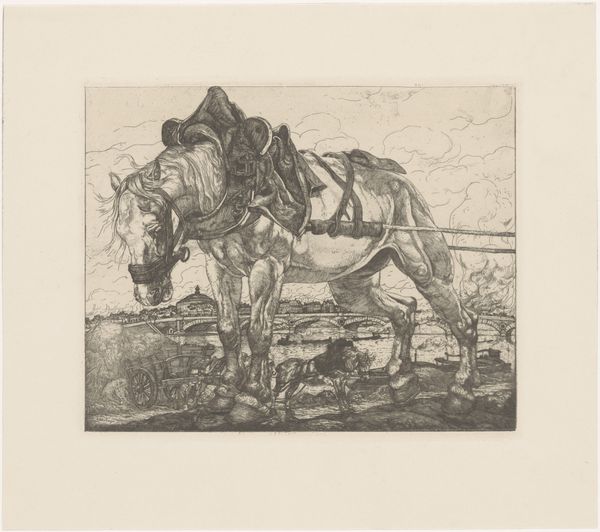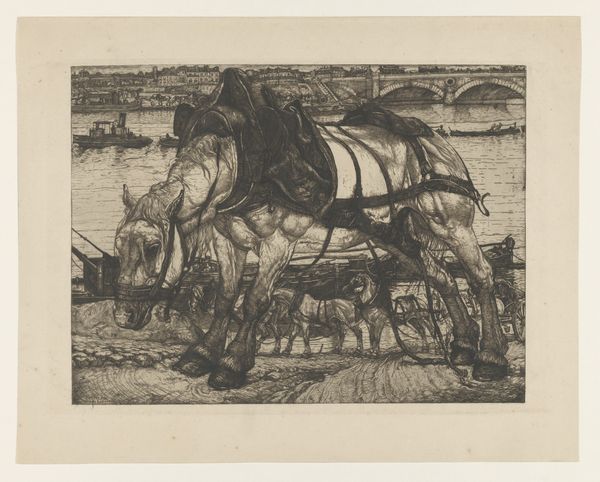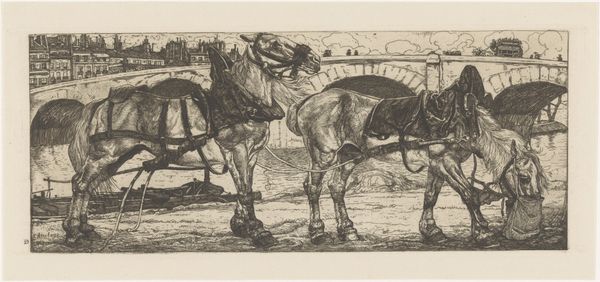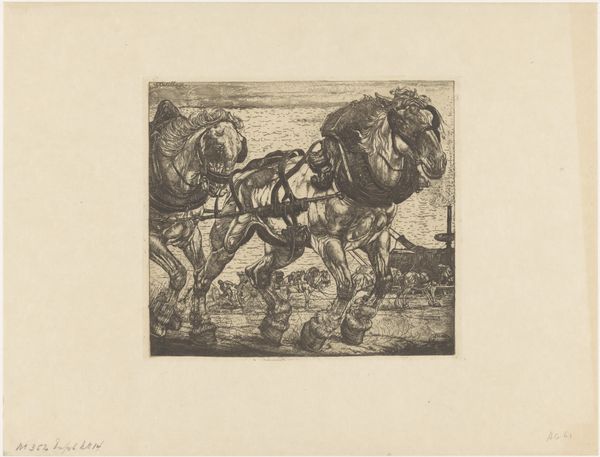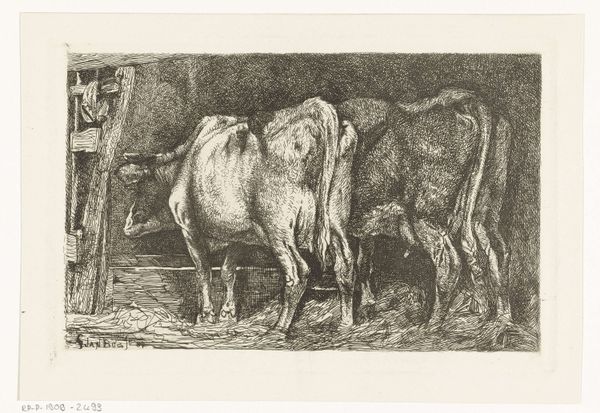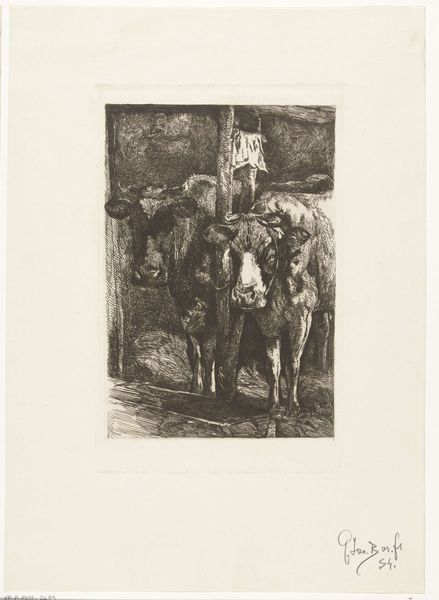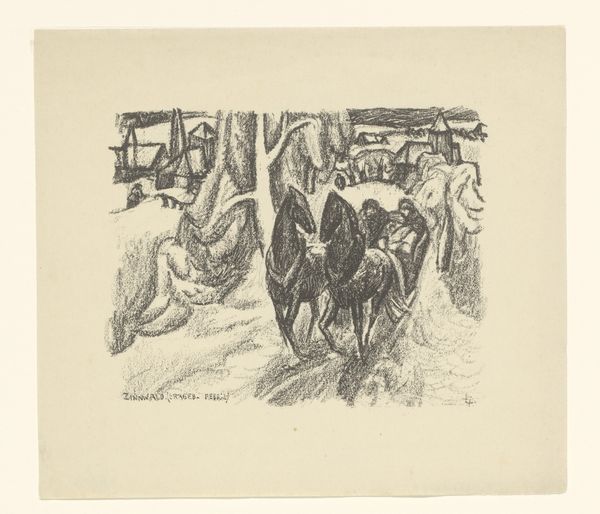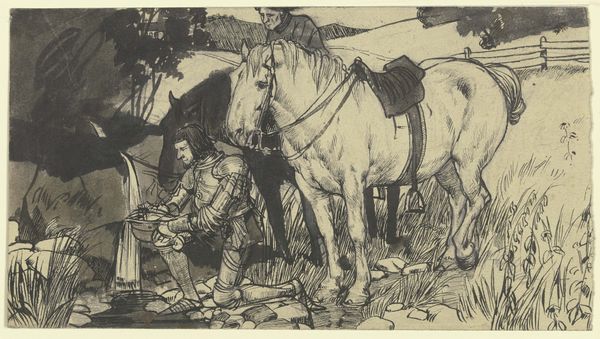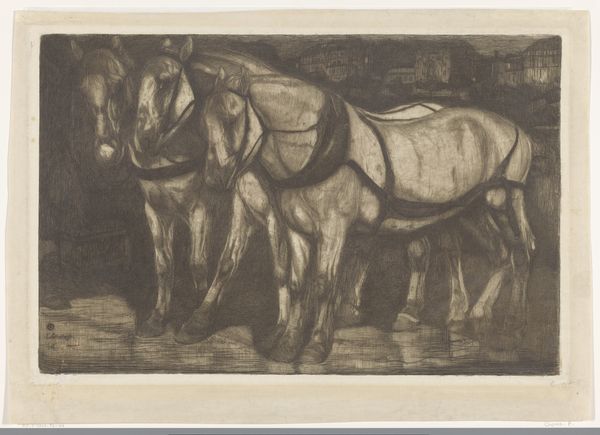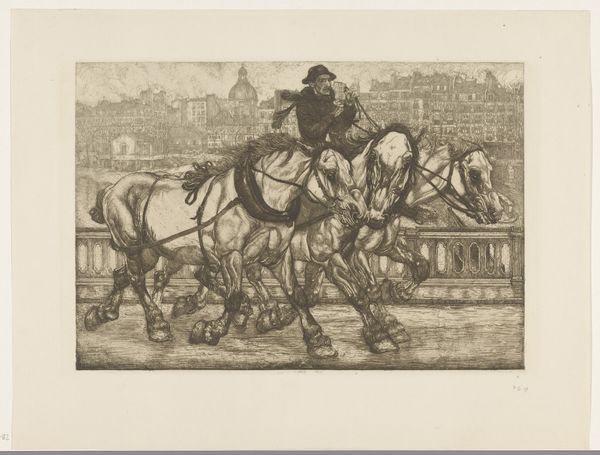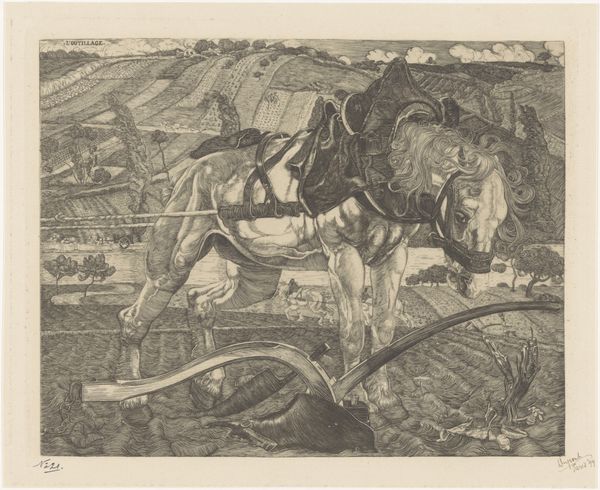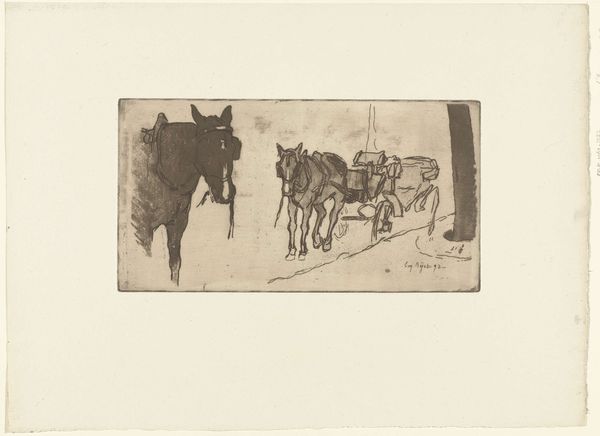
drawing, print, etching, paper, drypoint
#
pencil drawn
#
drawing
# print
#
etching
#
landscape
#
paper
#
linocut print
#
horse
#
genre-painting
#
drypoint
#
realism
Dimensions: height 495 mm, width 495 mm
Copyright: Rijks Museum: Open Domain
Editor: This is "Drie trekpaarden," or "Three Draft Horses," an 1896 etching by Pieter Dupont. It's a study in grey, and the cross-hatching gives a real sense of the weight and muscularity of the horses. It feels almost like a photograph somehow, yet it also conveys so much movement. What do you see in this piece? Curator: I see a powerful tableau of labor and its symbols. The draft horse, across cultures, represents not just physical strength but also reliability and perseverance. In Dupont’s work, the horses, rendered with such detail in their musculature, almost become allegorical figures. Editor: Allegorical how? Curator: Think about what horses pulling a cart, doing the heavy lifting, meant at the end of the 19th century. It was a time of huge industrial and agricultural shifts. The horse here, bound to labor, can symbolize the working class itself, carrying the burden of progress, the weight of societal expectations. Do you see any subtle indicators of social status conveyed through the rendering of the horses and their gear? Editor: I hadn't thought about it that way. Now that you mention it, there is a very somber, almost burdened look in the horses' eyes, particularly the one in the middle. And their harnesses and bridles look well-worn, definitely signs of a working animal, not something purely ornamental. Curator: Precisely. And this realistic depiction adds to the emotional weight of the print. It reminds us to consider not just the advancements of that era, but also the toll on those who made them possible. Ultimately, the symbols resonate. Editor: It’s fascinating to think about the horses as standing in for the working class; it changes how I perceive the whole composition. Thanks!
Comments
No comments
Be the first to comment and join the conversation on the ultimate creative platform.
